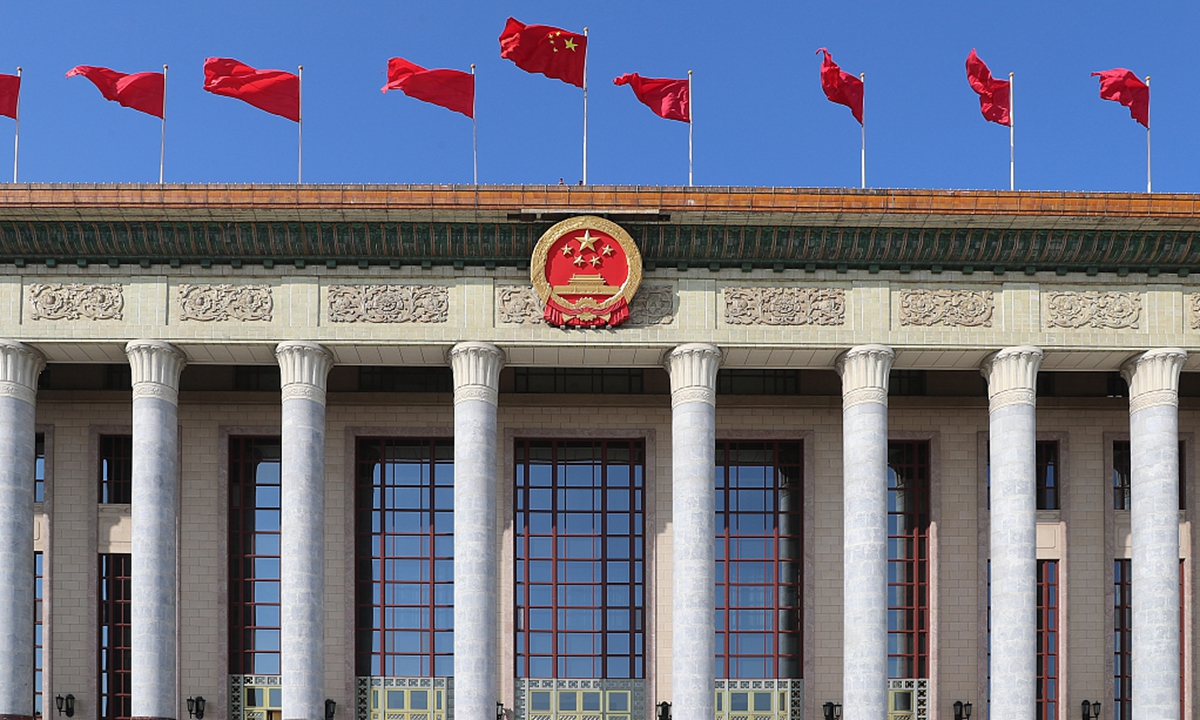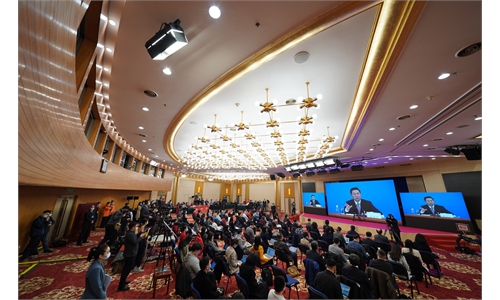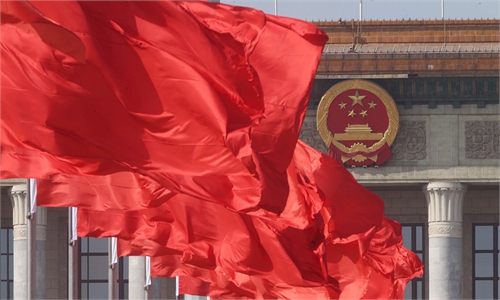GDP growth, investment high on two sessions' agenda
Two sessions focus on targeted measures to address weak links in economy

Photo: VCG
Messages to be sent by the Chinese government at the upcoming two sessions on fiscal policies will be closely watched by observers, as the world's second largest economy braces for 2022 with an emphasis on stability for economic development amid multiple challenges.
The two sessions of 2022, China's annual gatherings of the National People's Congress (NPC), the top legislative body, and the Chinese People's Political Consultative Conference (CPPCC), the top political advisory body, are scheduled to commence on March 5 and March 4, respectively.
In 2021, as the world recovered from the COVID-19 pandemic and countries rolled out massive economic stimulus packages, China with its resilient industrial base and supply chains posted a stellar annual growth of 8.1 percent.
However, as a surge in Omicron cases hit the world, China's economy also felt the impact, and growth slowed to 4.9 percent in the third quarter and 4 percent in the fourth quarter last year.
At the upcoming two sessions, though no specific policies are expected to be announced, economists and analysts are watching closely for the wording the Chinese central government will adopt to articulate its economic guidelines in a year that has already seen rising uncertainties, including the ongoing Russia-Ukraine conflict, on top of a resurging pandemic.
"GDP surpassing 110 trillion yuan ($17.41 trillion) mark," "common prosperity" and "fiscal policies exerting effect sooner" were the top three buzzwords on Chinese social media. Other concerns include financial support measures for small and micro-sized companies, housing, and policy on tax and fee cuts.
Liao Qun, chief economist at China CITIC Bank in Hong Kong, told the Global Times on Wednesday that while the two sessions will not roll out specific economic policies, as the meetings touch on matters beyond economic matters, what can be expected is how the central government chooses its wording in articulating its economic policies.
"In 2021, monetary policies were more conspicuous, while there was a feeling in the market that fiscal policies were somewhat reserved," Liao said. "Maybe the government is saving them for the necessary hour."
Lian Ping, head of Zhixin Investment Research Institute, said in 2021 about one-third of the quotas for special-purpose bonds were not used. But in the first two months of this year, these bonds were used up in a faster manner, with about 800 billion yuan worth of bonds issued.
China's Ministry of Finance pledged on February 22 that tax and fee reductions this year will be higher than the 2021 level of 1.1 trillion yuan.
Liao said to shore up the economy, the focus in 2022 will be on tax and fee cuts, infrastructure spending, and support for small and medium-sized companies.
"Still, there won't be a flood of stimulus and the government will be selective in applying its support policies to shore up disadvantaged groups and weak links in the economy," Liao said.
Lian predicted that common prosperity will become a hot topic at the two sessions, as the meetings are a place for debate, identifying differences and reaching consensus.
"Specific goals, targets and methods on how to make a bigger pie and swell the ranks of the middle class are also likely to top the agenda of the two sessions," Lian said, noting that other topics could include how China approaches the issue of carbon emissions reductions, job creation and stabilizing household incomes.
On Wednesday, Guo Shuqing, chairman of the China Banking and Insurance Regulatory Commission, said the economy faces lackluster demand, as well as slowing consumption and investment, and the banking and insurance industries are eyeing more targeted measures to spur consumption and expand investment.
Roughly 30 percent of market participants now getting loans from China's banks are small and micro-sized companies, Guo said, noting that it was an achievement.
Chinese Commerce Minister Wang Wentao said on Tuesday that the ministry is using cross-cyclical policy adjustment, as well as market diversification, ensuring smooth supply chains and fostering foreign trade innovation to stabilize growth in foreign trade, investment and consumption.
So far, the 31 provincial-level regions on the Chinese mainland have all published their economic goals, which averaged at about 6 percent - generally lower than for 2021, but still a relatively stable pace in the face of the so-called triple pressure of shrinking demand, supply shocks and weakening expectations.
A wave of infrastructure spending has taken place across the country, and Lian estimated projects so far announced are already worth 30 trillion yuan, though not all the construction will take place in 2022.
In mid-February, China announced 31 important policies and tax and fee cuts to bolster the services sector which was crippled by the COVID-19 pandemic. They banned the suspension of business or extension of closures for catering, supermarkets, scenic spots and cinemas.
Analysts forecast that Chinese government may set its GDP target at about 5-5.5 percent for 2022. The figure is usually announced in the government work report delivered at the two sessions.




